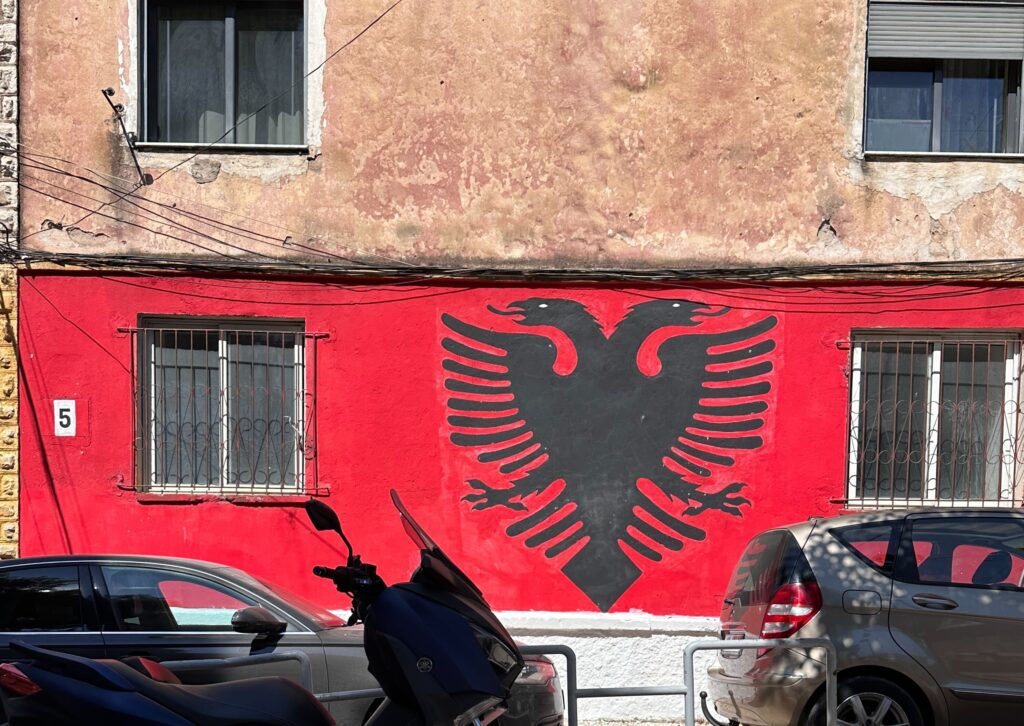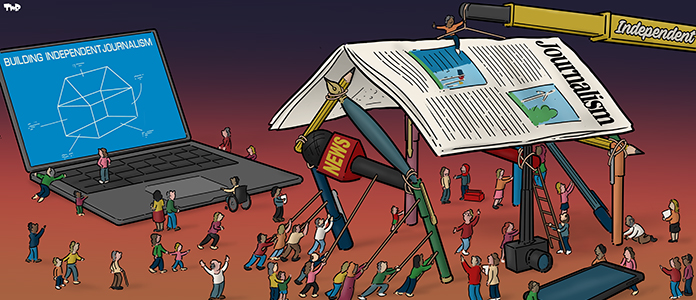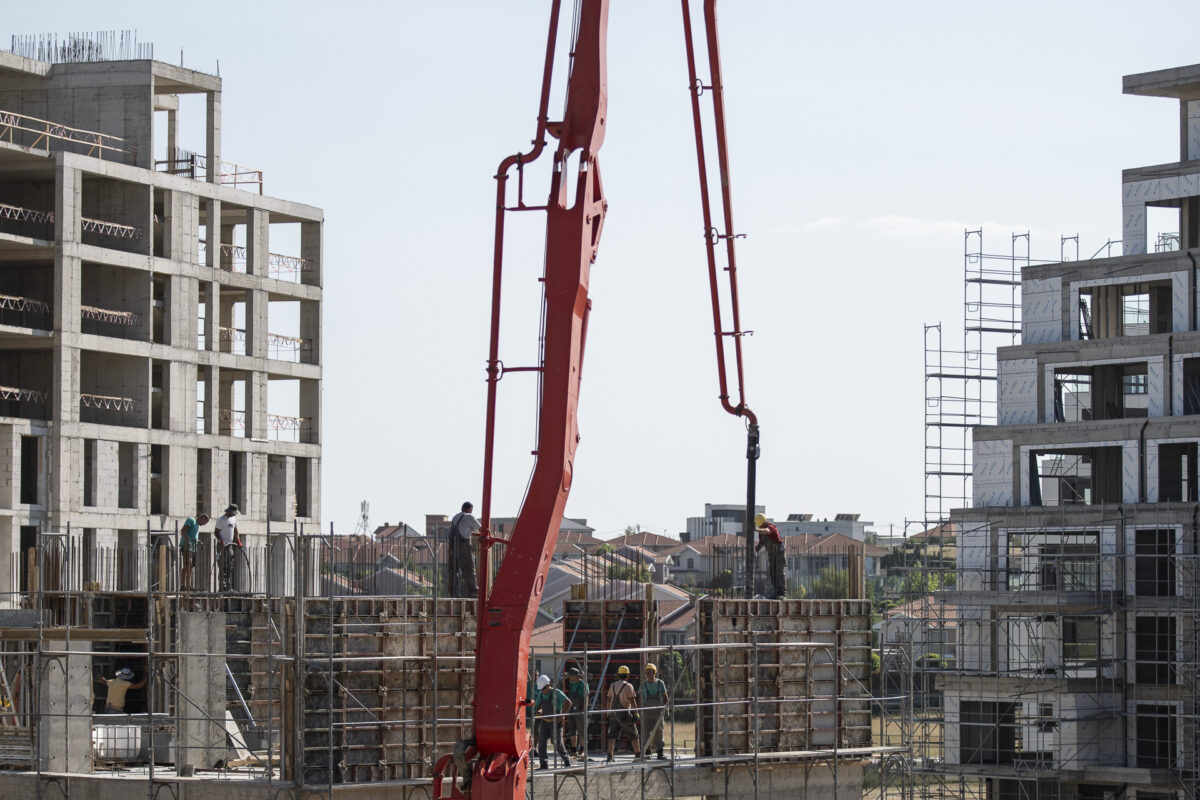For the past seven years, Dejana Stosic, 26, has been renting in Belgrade, the Serbian capital. Originally from a small town in the south of the country, Stostic recently found a job with a higher salary at a private company. But the cost of living remains high, and she has no plans to leave her current house-share.
“It takes me an hour and a half to get to work, but I cannot afford to move closer to the office, which is situated in one of Belgrade’s pricier neighbourhoods”, she says. “For some years now, I have been spending more than half of my salary on bills and rent.”
A few years ago, the Ministry of Space, a Belgrade-based NGO specialising in urban development, created an open-source map that collects rental and sale listings in the Belgrade market and compares them to average and median salaries. It turns out that Stosic’s experience is not uncommon. In most parts of Belgrade, the map shows red, indicating that housing is far from affordable.
Recently, the Serbian government launched a loan scheme for people aged 20 to 35 who are purchasing their first property. The down-payment is only one percent. However, to qualify, a citizen initially needed to have a long-term contract, while the unemployed needed a guarantor.
After an outpouring of objections, the Serbian government changed the law in May, allowing people on temporary contracts to also apply under the same conditions as the unemployed, who need a guarantor. The change means Stosic now qualifies for the scheme, overcoming the obstacle that her lack of a long-term contract once posed.
Currently, renting a one-bedroom flat in central Belgrade can cost anywhere between €600 and €1,200*, according to Numbeo, an open-source database. In suburban Belgrade, prices range from €300 to €650 for a one-bedroom flat, excluding utilities.
Eurostat defines affordable housing as costing less than 40% of a household’s disposable income. Marko Aksentijevic, from the Ministry of Space, clarifies that this figure includes monthly bills.
Serbia’s average monthly salary in December 2024 was €837, according to official statistics. A more accurate reflection of typical income is median salary, which also highlights income inequality. In December 2024, Serbia’s median salary was €677.60.
“This means that a family of three in Belgrade, with two median incomes, can pay up to €400 for rent and bills without it being a financial burden”, says Aksentijevic. However, the flats currently advertised at that figure are “mostly studios”, he adds. “They have to choose between squeezing into a small space or paying more than they can afford. The situation is alarming.”
Aksentijevic explains that most people who work in the public sector, education, and service industries, where salaries are often below average, cannot afford to live near their workplaces.
The Covid-19 pandemic, together with the Ukraine war, have significantly increased the cost of living and so worsened Europe’s ongoing housing crisis.
“Rental prices in Belgrade soared in 2022, increasing by up to 50% in less than a year. The surge was largely driven by the arrival of thousands of Russians fleeing their country after Russia invaded Ukraine more than three years ago”, City Expert, one of Serbia’s largest real estate agencies, told K2.0. Following that abrupt spike, prices gradually declined over the next two years, by around 20% in 2023 and a further 10% in 2024.
In cities like Belgrade, Tirana, and Prishtina, the combined cost of rent and utilities may now exceed average wages. The growing gap between supply and demand pushes mortgage and rental costs ever higher. It is making housing increasingly unaffordable, particularly for young people.
Kosovo citizens move to unaffordable urban areas
Last year marked a milestone in Kosovo’s urban development. For the first time, the majority of the population (50.2%) lives in urban areas, compared to 38% in 2011, according to data from the UN programme UN-Habitat.
“This represents a major shift toward urban living and reflects broader socio-economic changes taking place across the country”, Besnike Koçani, from UN-Habitat, told K2.0.
The 1998-1999 war in Kosovo had a significant impact on housing availability. According to Kocani, 40% of houses were destroyed or severely damaged. In response, much of the rural population moved to cities in search of shelter.
“As a result, the housing landscape experienced a significant rise in informal construction, particularly during the early 2000s”, adds Koçani. “This occurred mainly due to weak institutional oversight and insufficient planning,”
Kosovo’s urban areas became denser, dominated by apartment buildings that were often built without consideration for infrastructure capacity or planning regulations. This has led to uncontrolled urban sprawl, growing pressure on public services, and deepening development disparities between municipalities. Some areas, especially Prishtina, have experienced another construction boom in recent years. According to UN-Habitat data shared with K2.0, the total number of housing units has increased by 41.3%, from 412,000 in 2011 to 583,000 in 2024. At the same time, the number of vacant houses and apartments has nearly doubled, rising from 99,808 in 2011 to 182,849 in 2024.
This rise in vacancy rates is closely tied to Kosovo’s large diaspora. Hundreds of thousands of Kosovans live and work abroad, particularly in Western Europe. Many members of them invest in real estate in their hometowns as a future retirement plan or to help their families. The properties in question often remain unoccupied for most of the year, as their owners return only during holidays or summer visits. Such investments boost the construction sector, but they also distort the housing market by reducing the supply and so inflating property values.
In Prishtina, renting a one-bedroom apartment costs between €225 (in the suburbs) and over €300 (in the city centre), according to Numbeo. The real-estate listings of rental agencies show that one-bedroom flats for under €300 are nearly nonexistent. A three-bedroom apartment typically rents for over €300 outside the city centre and more than €600 in central areas.
There is no official data on how much real-estate prices in Kosovo have increased in recent years. “My estimate is that the increase over the past years was between 20 and 30%”, says Driton Tafallari, housing and urban development expert.
Even without official data, it is evident that real estate prices in Kosovo have sharply increased. In 2014, a 64 square-metre apartment on “Rruga B” was purchased for €720/sqm. Today, the average price in the same neighborhood exceeds €1,300/sqm.
Aside from affordability, Koçani notes that substandard infrastructure is widespread in Kosovo. Problems abound with water supply, sewage, energy, and transportation.
Kosovo reports the lowest average salary in the region: €552 net, according to the most recent official data, from December 2024. Albania ranks between Belgrade and Prishtina in income levels, with average monthly earnings about 30% lower than in Serbia and 37% higher than in Kosovo.
Living with parents by necessity
Albania is facing a similar housing crisis, with soaring rents and stagnant wages. Despite rampant construction and rapid urban development, affordability is a major issue, especially in the capital, and especially for young people.
Emre Berisha, a 25-year-old taxi driver from Tirana, lives with his parents in their family home, like 70% of young Albanians. Driving past Tirana’s colourful facades, he shares his grim perspective. “I don’t see how I will ever afford to move out – my salary would need to almost double”, says Berisha.

Renting a one-bedroom apartment in central Tirana can cost between €500 and €900 euros a month, dropping to €350-500 in the suburbs, according to Numbeo. These figures, which exclude utilities, already far exceed the 40% threshold of monthly income used to define affordable housing.
Tirana, Prishtina, and Belgrade are the economic centres of their respective countries, attracting large numbers of young people who move there to study and pursue job opportunities. Unlike Berisha, many of them do not have family homes there, and are forced to rent. “Not owning an apartment combined with high prices makes it very difficult for them to live”, says Teuta Nunaj-Kortoçi, an economist from Albania.
“In theory, the only way out of living with my parents is getting married and securing a bank loan”, says Berisha. Such a burden is more easily shared between two people.
Beyond conventional bank loans, Berisha will probably not qualify for Albania’s soft-loan scheme for young married couples. Launched in 2018 and revised in 2020, the scheme has continued to focus exclusively on couples, but has faced widespread criticism for its inadequacies.
Meanwhile, in 2025, around 1,200 couples accessed social housing in Tirana. To qualify, they must prove that their current housing falls below minimum standards.
Demand for the scheme far exceeds its capacity. Between 2018 and 2022, only 2,652 out of 7,645 applications were approved – less than half, according to official data.
In Belgrade, Stoisic has a similar experience. “Buying property still seems like a mission impossible – maybe if I get married and have children, I could secure a loan for couples,” Stoisic says.
In Serbia, the Parliament recently adopted amendments to the law on subsidized loan schemes for citizens aged between 20 and 35. Irrespective of employment status, first-property buyers can apply for up to €100,000 of state-subsidized loans. The minimum deposit is only one percent, and repayment can be spread over 40 years. Thousands of people applied, and the scheme was criticized as unsustainable.
There are two other types of loans available for couples struggling to buy property, both aimed at underdeveloped towns and villages. In 2021, the Ministry of Rural Welfare launched a small grant scheme offering €10,000 to families wishing to purchase houses in rural areas. The opportunity is open to people under 45, including married or cohabiting couples, single parents, and young farmers. Applicants must be current renters, have a degree in medicine, pharmacy, agriculture, veterinary medicine, or work in crafts, jobs that are compatible with living in the countryside.
In Kosovo, there are currently no housing schemes specifically for young people. However, in December 2024, the Kosovo Assembly passed the Draft Law on Social and Affordable Housing. The law lays the groundwork for an eight-year national housing strategy and proposes the creation of a Housing Agency to oversee and centralize implementation. It introduces affordable housing initiatives, including subsidies for apartment purchases targeting young people among 17 identified groups.
The law also extends social housing benefits to those unable to afford market-priced housing, capping rent at 30% of a family’s income. Young people have been newly included as a target category, though the law does not yet outline concrete measures for them.
Can social housing provide a solution?
In Western Europe, social housing is intended not only for low-income families but as a stepping stone for entry to the property market. The situation is quite different in Serbia, Kosovo, and Albania. Despite a growing number of people struggling with housing affordability, the limited social housing available is reserved almost exclusively for the poorest. Even then, long waiting lists remain.
In Albania, social housing, both public and private, accounts for only 0.1% of the total residential stock, according to a 2014 report by the UN Economic Commission for Europe (the most recent analysis on the subject). In Serbia, the state owns just 0.5% of the real estate stock.
In a 2016 law, Serbia replaced the term “social housing” with the concept of “housing support”. This includes social flats rented to low-income families at subsidized rates, though tenants are still required to cover utility bills. For many – particularly seasonal workers and informal labourers – even paying the bills is unaffordable. Many find themselves in debt and at risk of eviction, according to A11, a Belgrade-based rights group.
The number of Serbians in need of support is growing. According to the Ministry of Construction, only the wealthiest 10% can rent or buy housing without experiencing financial strain.
“It is clear that the state has to help much wider sections of the population than those who live in extremely difficult conditions”, says Aksentijevic.
In Kosovo, social housing is regulated by municipalities and has not yet been consolidated into a centralized national programme. Between 2003 and 2024, most municipalities built or allocated separate buildings specifically for social housing. According to data from the Ministry of Environment, Spatial Planning and Infrastructure (MESPI), 20 municipalities currently operate social-housing programmes. All are based on the same model: standalone buildings reserved for beneficiaries.
As in Albania and Serbia, social housing in Kosovo is intended to support vulnerable citizens. However, many others are also unable to afford homeownership.
“I don’t see how I will ever afford to move out – my salary would need to almost double” – Emre Berisha, Taxi driver
Indeed, this problem is becoming a challenge across the European Union. Only 8% of the EU’s housing stock is classified as social housing, according to data from the Organisation for Economic Cooperation and Development. In 2022, 69% of the EU population lived in owner-occupied homes, while the remaining 31% were renting.
Between 2015 and 2023, housing prices in the EU increased by an average of 47%, while rental costs rose by 18%, according to Efsyn. While no country in the Western Balkans has recorded housing-related protests in recent years, that is not the case in other EU countries.
Spain witnessed some of the largest protests in April 2025. Thousands of people marched in more than 40 cities, calling for a better balance between tourism and the liveability for residents. The protests were concentrated in high-demand locations like the Canary Islands.
In 2023, Spain adopted a law that established a national rental-price reference system, which provides data on rental costs in each area and includes measures such as tax breaks for landlords who offer affordable rents. In designated high-pressure zones, owners of large property portfolios are prohibited from signing new leases that exceed the benchmark price set for their area. But the crisis in Spain is far from unique.
In Greece, where tourism dominates the economy, a housing shortage has been a source of public frustration for over a decade. Property prices peaked in 2024. According to Efsyn, around one-third of Greek residents spend more than 40% of their disposable income on housing.
Conversely, Austria is often cited as a model for municipal housing policy. Vienna has been building social housing for over 100 years. The programme was launched by the Social Democratic Party after Vienna became a federal state in 1922. It was initially financed through the sale of bonds and later supported by municipal revenues, including a special progressive tax on landlords and taxes on luxury goods — collectively known as the “Breitner tax,” introduced by councillor Hugo Breitner.
Between 2004 and 2019, Vienna built 220,000 apartments across more than 2,300 municipal buildings. Today, about a quarter of Vienna’s two million inhabitants live in these units. They benefit from low rents, averaging just €6.67 per square metre. Such a success story appears out of reach for most others, both across the EU and in the Western Balkans.
**Euro exchange rates are rounded and updated as of August 2025.
👉 Original article on Kosovo 2.0
🤝 This article was produced within the PULSE Network, a cross-border journalistic initiative embracing a collaborative approach to editorial production
Do you like our work?
Help multilingual European journalism to thrive, without ads or paywalls. Your one-off or regular support will keep our newsroom independent. Thank you!













Join the discussion
Become a member to translate comments and participate